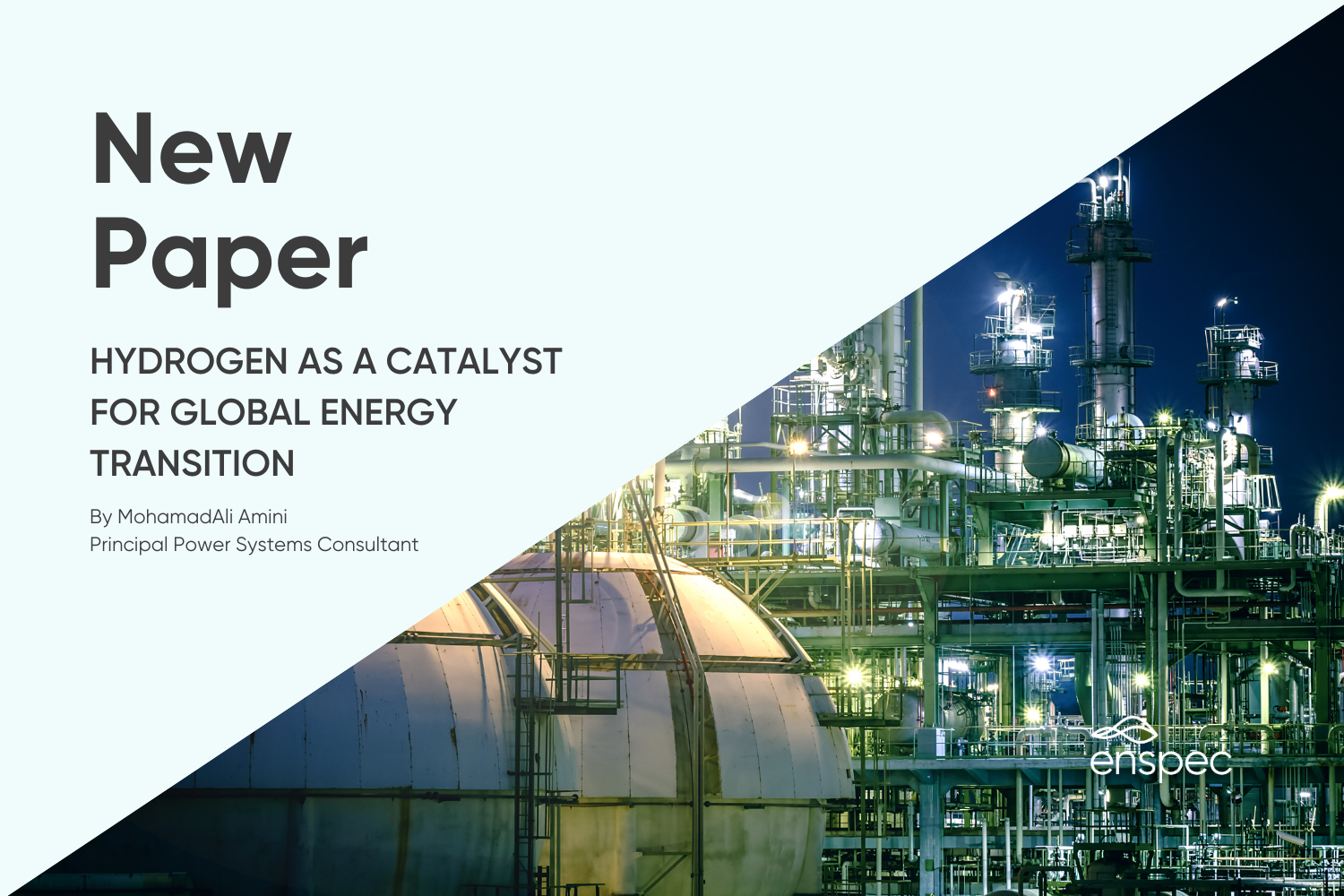KTP latest: Highlighting the Hydrogen challenges
Hydrogen is rapidly emerging as a cornerstone of the future energy landscape, with its potential to revolutionise energy storage and fuel systems. At the heart of this evolution is the groundbreaking Knowledge Transfer Partnership (KTP) between Enspec Power and Manchester Metropolitan University. This initiative, supported by Innovate UK, seeks to address one of the most critical challenges in hydrogen integration: ensuring grid stability and power quality in a hydrogen-powered future.
Now a handful of months into the groundbreaking KTP we catch up on the project’s progression with MohamadAli Amini.
How have the last four or five months been MohamadAli?
Very interesting as this partnership, fuelled by Innovate UK, focuses on an incredibly important matter in the power grid – power quality and hydrogen as a future fuel source.
In the early days and weeks of this two-and-a-half year project it was all about getting to grips with the probable challenges that fuel cells and electrolysers can cause to the grid.We are purely looking at what happens from the grid point of view – not chemical reactions that happen inside the fuel cells and electrolysers. Voltage challenges, frequency challenges and the support these devices can provide to the grid were and remain among my focus points.
Could you go into more detail?
Large-scale power grid users are generally required to provide support during various grid events, which may involve responding to frequency or voltage variations. We are looking, for example, whether fuel cells and electrolysers can overcome grid frequency variations by changing the power transfer at the point of connection.
Considering the operation mode of an electrolyser, which draws power from the grid and produces hydrogen, it must respond swiftly to abrupt frequency changes in the grid to address such challenges effectively. Another challenge from the grid’s perspective is the operation of fuel cells and electrolysers, which generate harmonics since they are connected to the grid through a power converter interface.
The voltage and current waveforms in the power grid are ideally expected to maintain a pure sinusoidal form. However, the operation of power converters associated with fuel cells and electrolysers introduces harmonic distortions, resulting in deviations from this ideal waveform. These distortions, characterised by oscillations and non-linearities, pose a significant challenge to grid stability and power quality by impacting the sinusoidal integrity of voltage and current waveforms.
The structure of power converters significantly influences the extent of harmonic distortion introduced into the grid. To mitigate these distortions, various converter structures, such as 12-Pulse Thyristor Rectifiers, Active Front-End Rectifiers, and other advanced configurations, may require harmonic filters, particularly on the AC side. Each configuration has unique harmonic characteristics, and appropriate filtering is essential to maintain grid stability and ensure compliance with power quality standards.
What’s been the biggest point of progression?
Highlighting the different challenges and capabilities of electrolysers and fuel cells. This is what we are doing now. I have prepared a document listing different converter topologies, their characteristics, their capabilities and their limitations. We know all of them. I also prepared a list of different types of electrolysers, their capabilities, their ramp rates, their scalability and how big they can be in terms of the sites where they may be utilised.
I have also gathered a lot of information about converters, electrolysers and fuel cells. I am continuously going through more details in regards to all these important aspects and we will be sharing as much as possible as the project progresses.
What can we expect next?
Well, as discussed, we are gathering and highlighting the challenges that electrolysers and fuel cells cause to the grid. In order to provide solutions, we need to go further into the detail of the problems and issues caused so we can then address how measures and compensators can overcome these challenges in the future.
At the moment we have grid codes for common power generating sites like photovoltaic, wind farms – but not for hydrogen sites.
So, I am evaluating the distortions that they can cause to the grid from a power quality point of view while assessing whether they can pass regulation on sites such as wind farms and PV. And if not, I am looking at the possible constraints they may require to then do so.
Is there any more detail that you can go into at this stage?
At present, I am continuing my work on addressing the challenges that hydrogen plants, whether electrolysers or fuel cells, could pose to the grid. I have initiated the modelling of a hydrogen plant to evaluate its potential negative impacts on grid stability. As part of the grid connection requirements outlined by National Grid, an RMS/EMT simulation model, along with the corresponding results, must be prepared before approval for grid connection.
As we continue to unravel the complexities of hydrogen’s integration into the power grid, the focus remains on addressing the challenges posed by electrolysers and fuel cells to ensure grid stability and compliance with power quality standards. The development of detailed simulation models and rigorous testing in collaboration with MMU’s hydrogen lab marks an important step forward in this process. This ongoing research not only strengthens the foundation for hydrogen adoption but also positions Enspec Power and its partners at the forefront of innovation in the energy transition.



